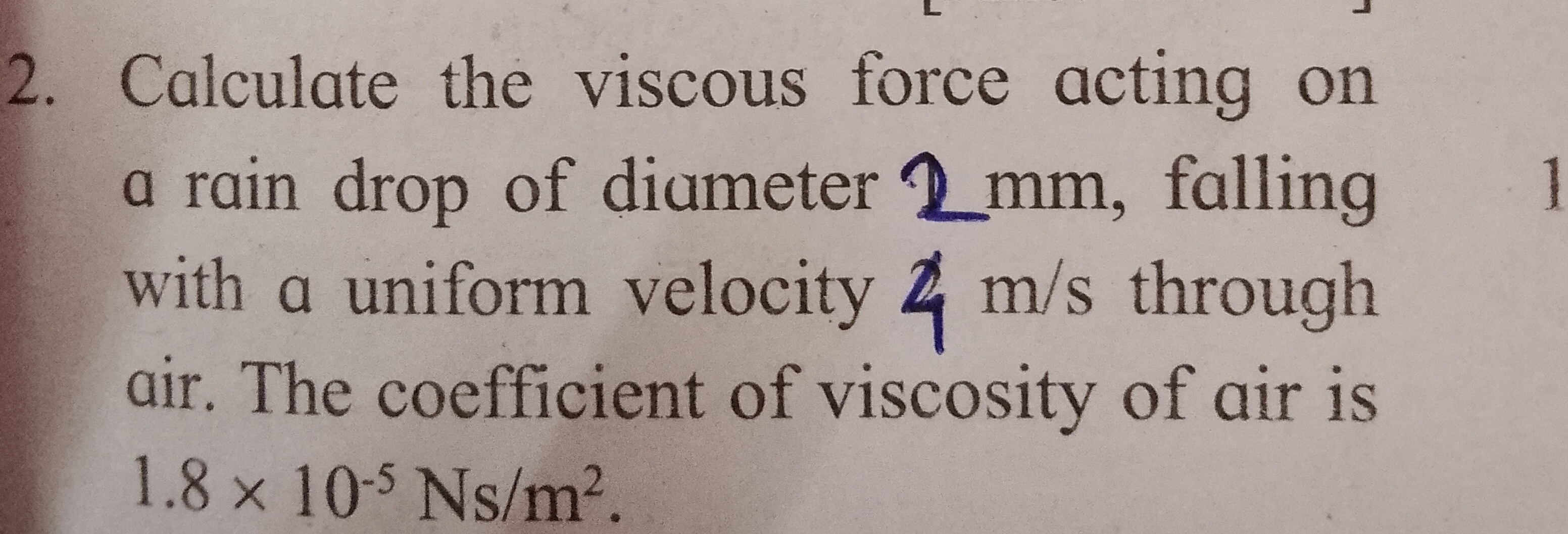Question
Question: Calculate the viscous force acting on a rain drop of diameter 2 mm, falling with a uniform velocity ...
Calculate the viscous force acting on a rain drop of diameter 2 mm, falling with a uniform velocity 4 m/s through air. The coefficient of viscosity of air is 1.8 x 10-5 Ns/m².

1.36 x 10-6 N
Solution
The viscous force acting on a spherical object moving through a fluid at low Reynolds number is given by Stokes' Law:
Fv=6πηrv
where:
Fv is the viscous force η is the coefficient of viscosity of the fluid r is the radius of the spherical object v is the velocity of the object
Given values:
Diameter of the rain drop, d=2 mm Radius of the rain drop, r=d/2=2/2=1 mm =1×10−3 m Uniform velocity of the rain drop, v=4 m/s Coefficient of viscosity of air, η=1.8×10−5 Ns/m²
Substitute these values into Stokes' Law formula:
Fv=6π×(1.8×10−5 Ns/m²)×(1×10−3 m)×(4 m/s) Fv=(6×1.8×1×4)×π×(10−5×10−3) N Fv=(10.8×4)×π×10−8 N Fv=43.2×π×10−8 N
Using the value of π≈3.14159:
Fv≈43.2×3.14159×10−8 N Fv≈135.7167648×10−8 N Fv≈1.357167648×10−6 N
Rounding to 3 significant figures: Fv≈1.36×10−6 N.
